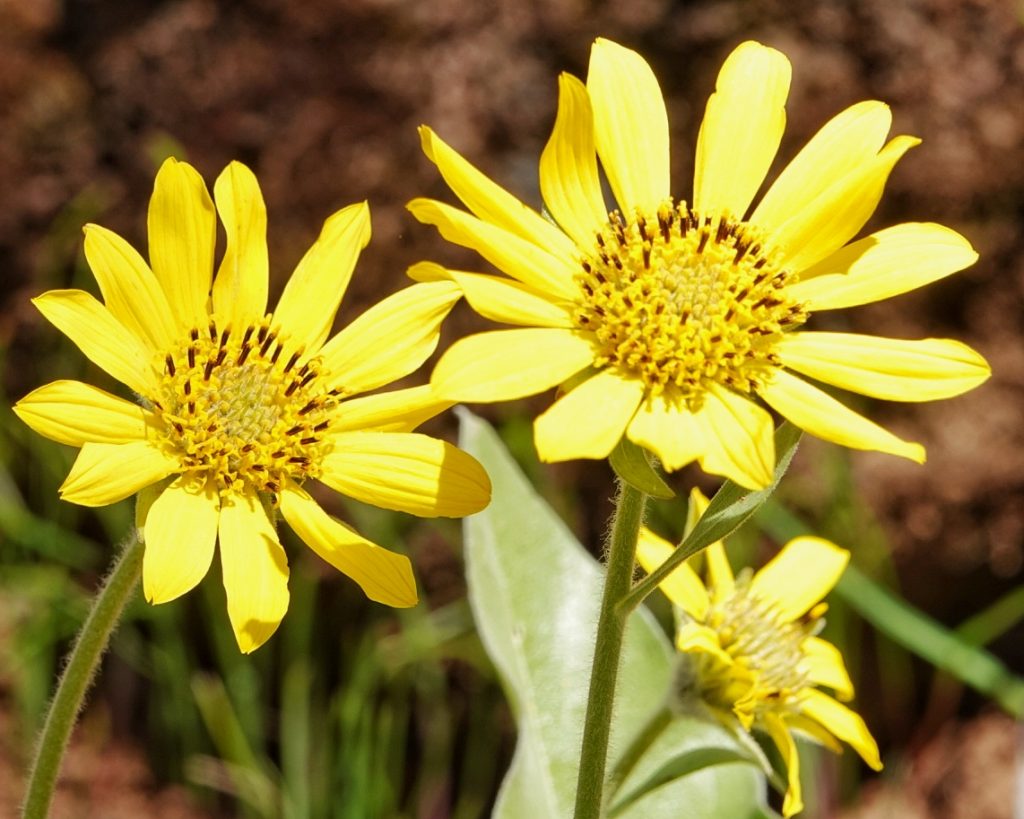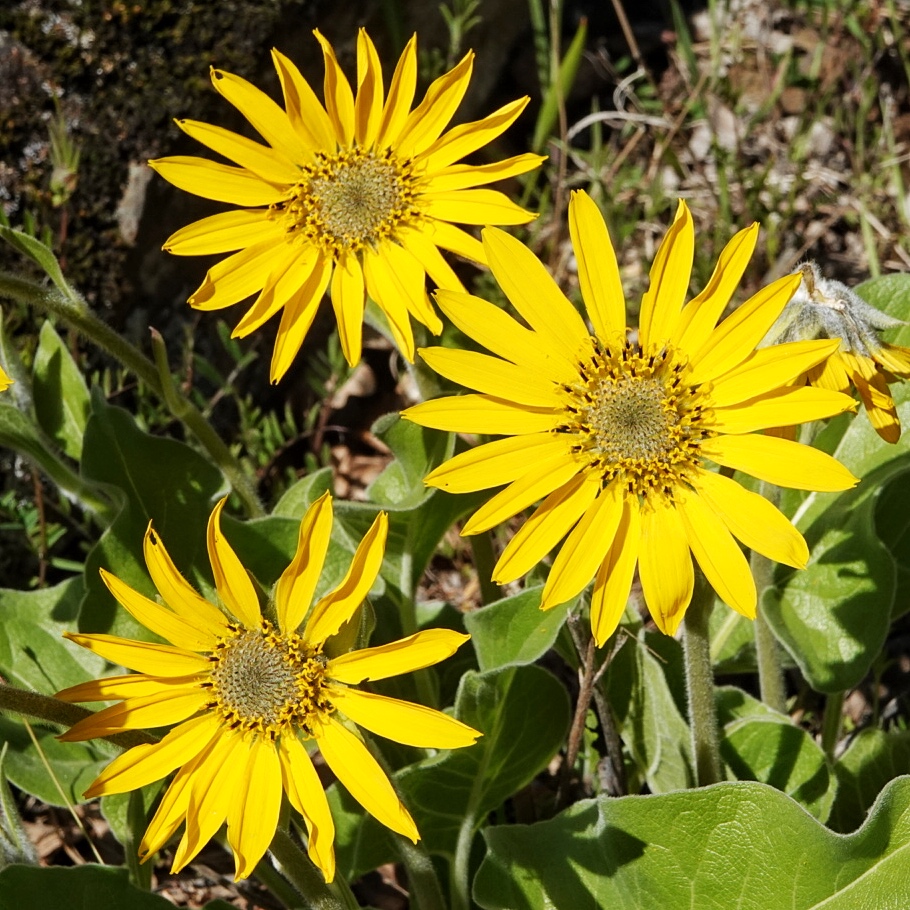
I do not know for sure what these plants are, and it would take a DNA analysis to be certain. Balsamorhiza spp. are “notorious for lack of genetic barriers to hybridization” (Flora of Utah; Welsh et al. 1987). This is exacerbated by a lack of pickiness amongst pollinators, who visit the flowers of the different species of Balsamorhiza indiscriminately.
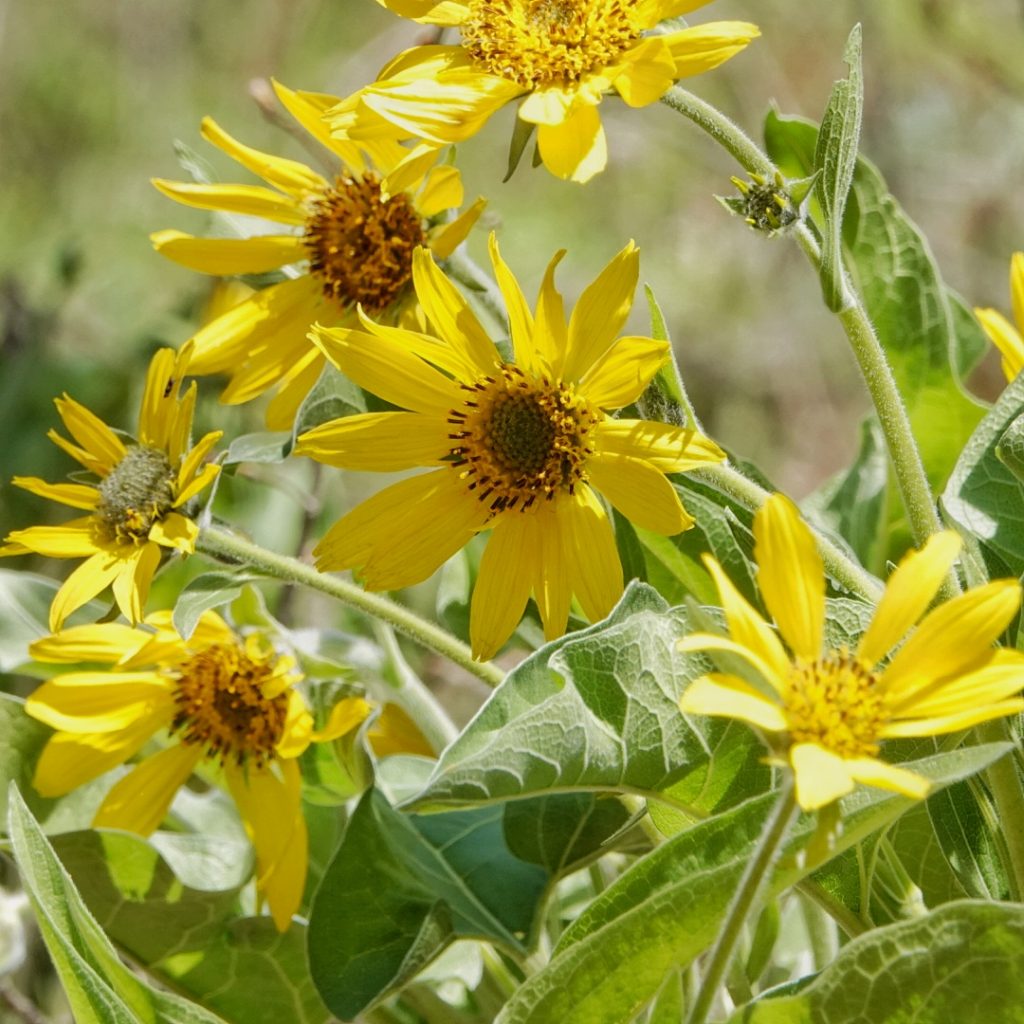
But according to Paul Slichter of the Native Plant Society of Oregon, the Balsamorhiza in the valley where I found these are all Balsamorhiza careyana or B. careyana x deltoidea. B. careyana is an eastside species, and B. deltoidea is a westside species. But there is overlap in the Columbia River Gorge, and where there is, hybridization is rampant. So much so that in vol. 2 of Flora of Oregon (2020) they suggest that “The two species should perhaps be considered varieties of the same species”. Carey’s Balsamroot also hybridizes with almost every other balsamroot where their ranges intersect. The exception is B. macrophylla, a polyploid with 100 chromosomes rather than the 19 of the other members of the genus.
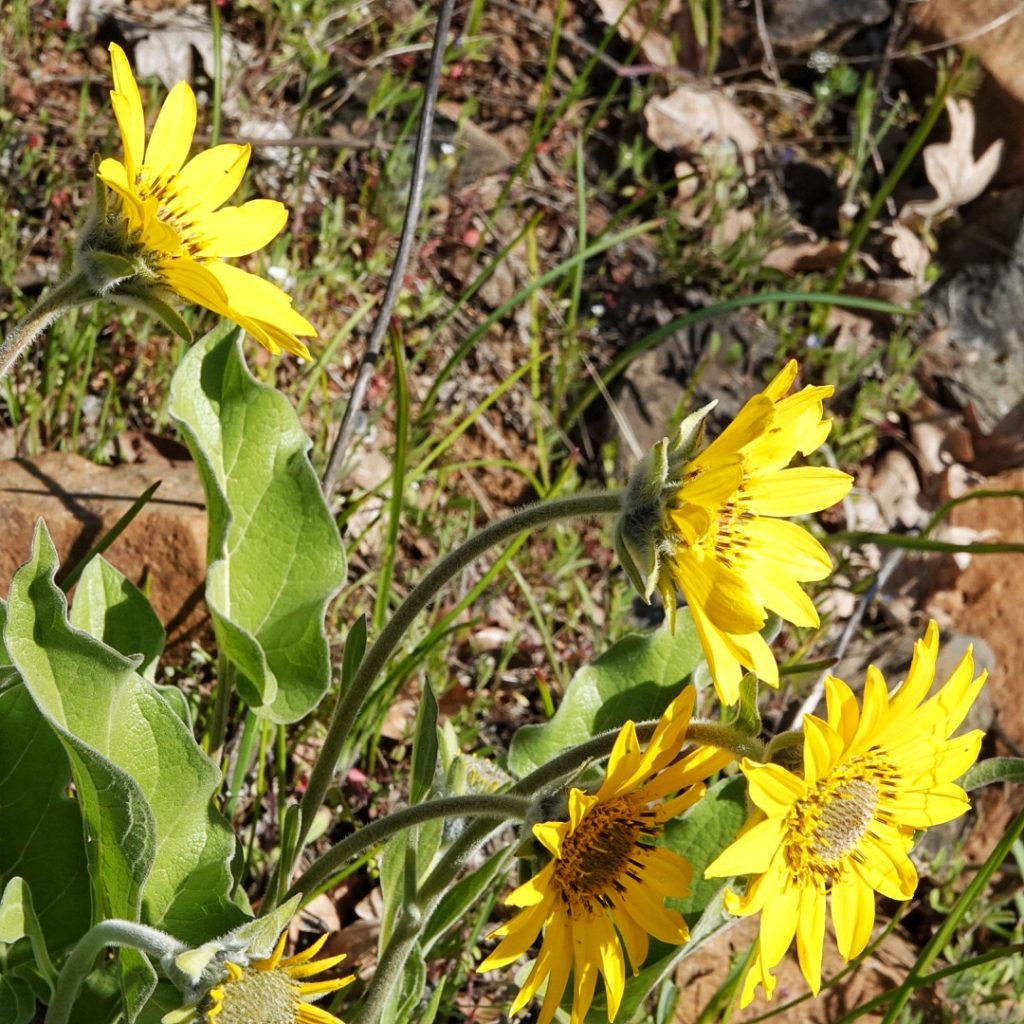
Undoubtedly the indigenous peoples of the region used this plant in many of the same ways (using the roots, leaves,and stems for food, the seeds for flour, and various parts of the plant medicinally to treat wounds, burns, fevers, intestinal disorders, etc) they used Arrowleaf Balsamroot (B. sagittata), but, possibly because they didn’t distinguish between the two, I can find no information on the ethnobotany of B. careyana.
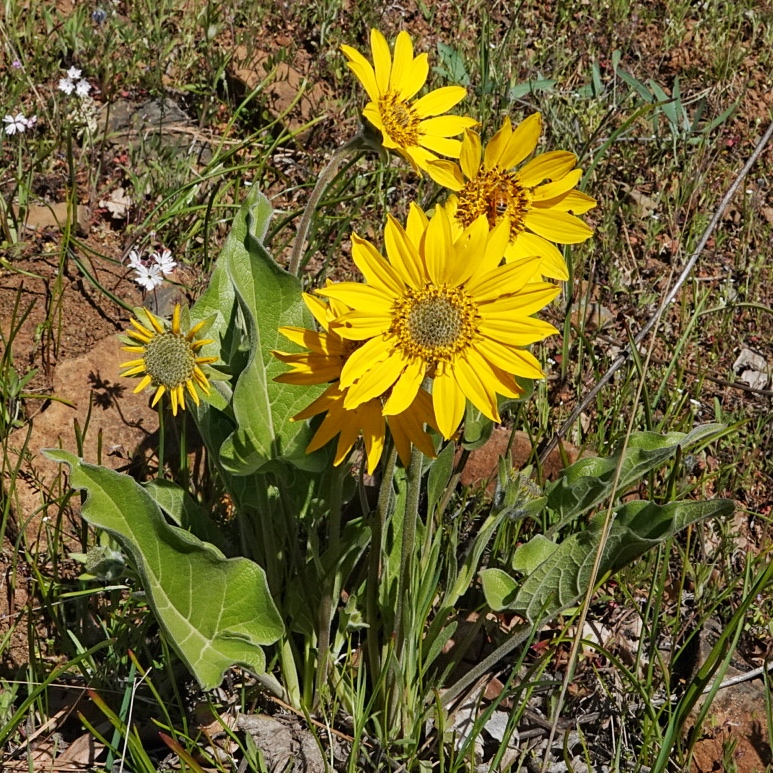
Description– Large perennial (up to 3’ tall) with large (up to 12”x6”) triangular to spearhead shaped leaves on long petioles (± same length as leaf); leaves are smooth margined, mostly hairless on top, with sparse fine hairs below; several bright yellow flowerheads on mostly leafless scapes; 25mm disc with 20-30mm rays
Similar species–B. sagittata has much hairier leaves and bracts; B. deltoidea usually has a single flower head, and the basal part of the leaf is toothed.
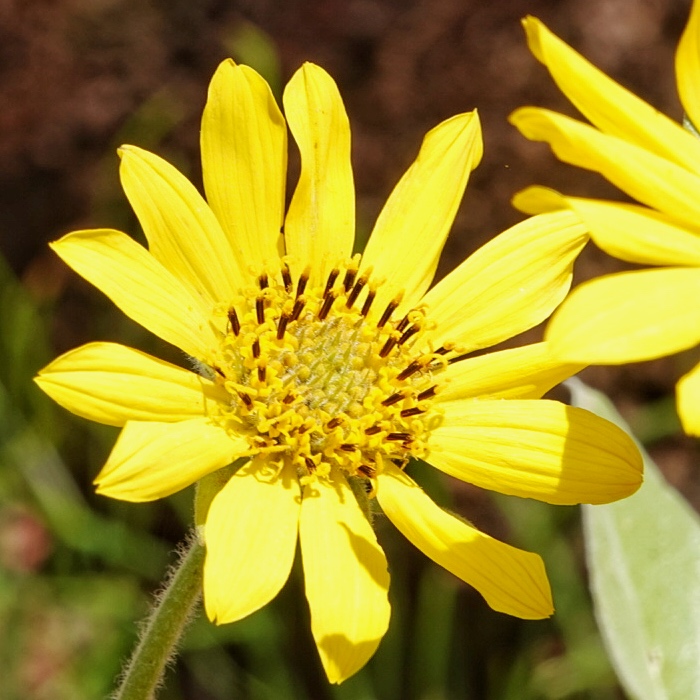
Habitat– Openings in pine forests and dry scablands up to 3,000’ elevation.
Range-Northwest endemic; east of the Cascades in Washington and Oregon, with B. careyana x deltoidea hybrids extending to the west in the Columbia River Gorge.
Reproductive timing– March to July, depending on elevation.
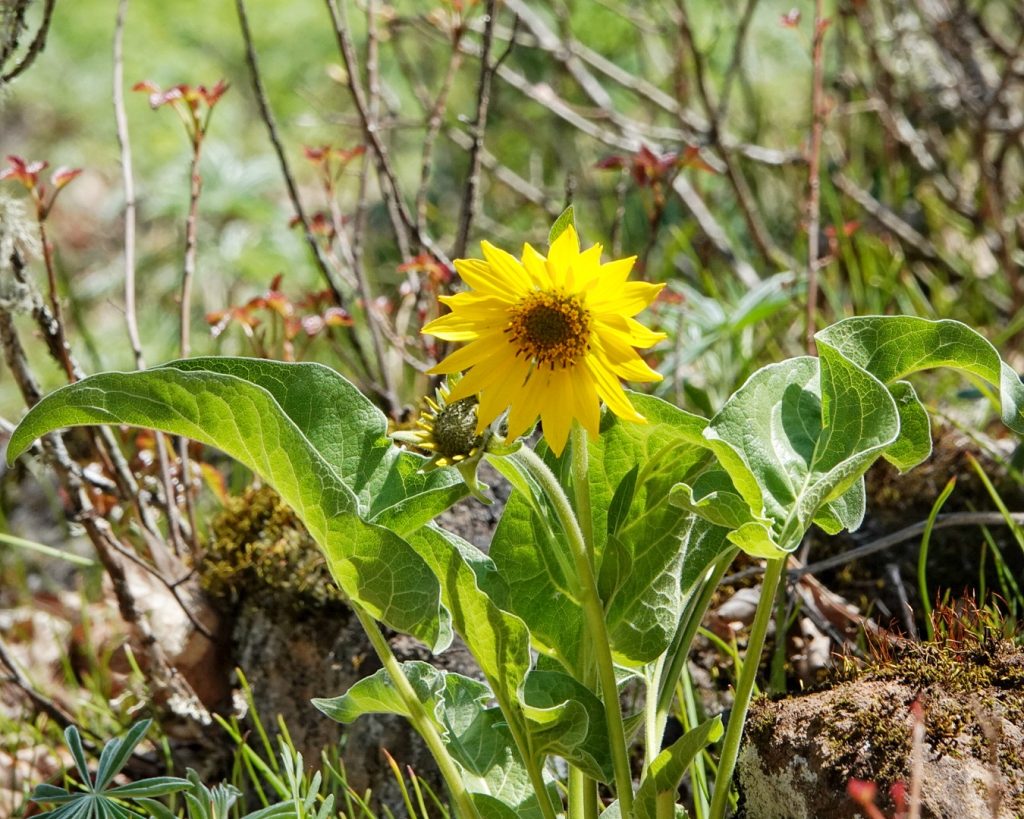
Eaten by– The leaf miner beetle Microrhopala vittata utilizes this plant as a larval host; deer, elk, pronghorns, and bighorn sheep eat the leaves and flowers; many birds and rodents feed on the seeds; adults of the buprestid beetle Acmaeodera idahoensis , and megachilid bees in the genus Osmia, feed on the pollen and nectar, as do a wide variety of other pollinators.
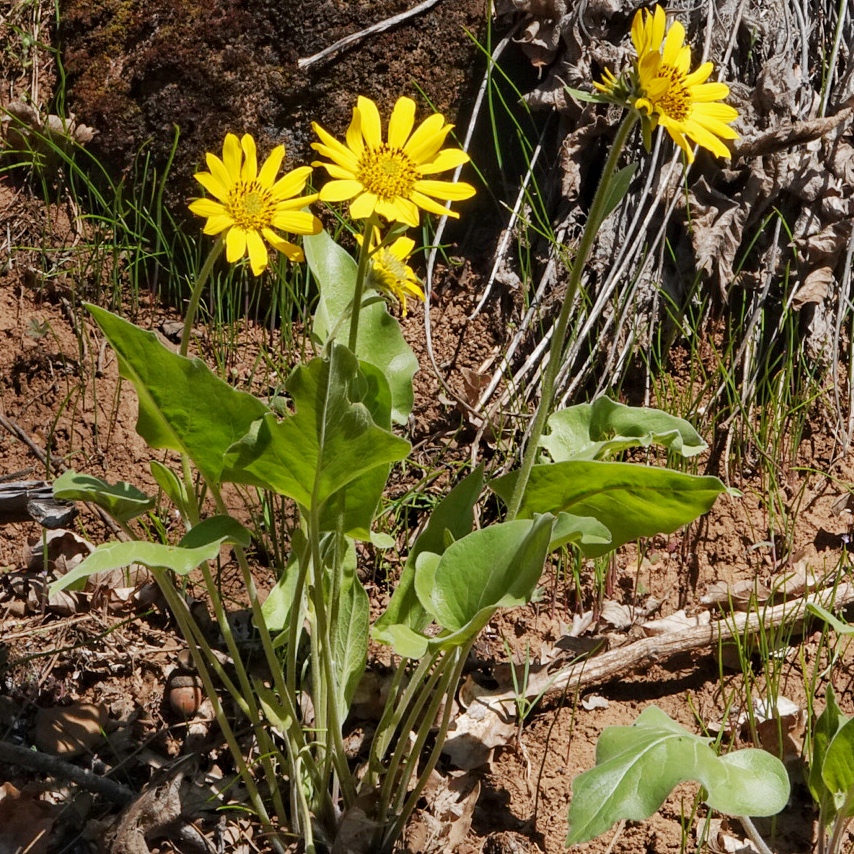
Etymology of names–Balsamorhiza is basically Latin for balsam root, and refers to the balsamic resin of the large, fragrant taproot of plants in this genus. The specific epithet careyana honors John Carey (1793-1880), an English botanist who was a good friend of, and collaborator with, Asa Gray, describer of this species.

http://www.efloras.org/florataxon.aspx?flora_id=1&taxon_id=250066206
https://www.pnwflowers.com/flower/balsamorhiza-careyana
https://www.inaturalist.org/projects/plants-of-central-oregon/journal
https://bsapubs.onlinelibrary.wiley.com/doi/pdfdirect/10.3732/ajb.90.11.1653
https://www.fs.fed.us/rm/pubs_other/rmrs_2011_cane_j002.pdf
https://en.m.wikipedia.org/wiki/John_Carey_(botanist)
